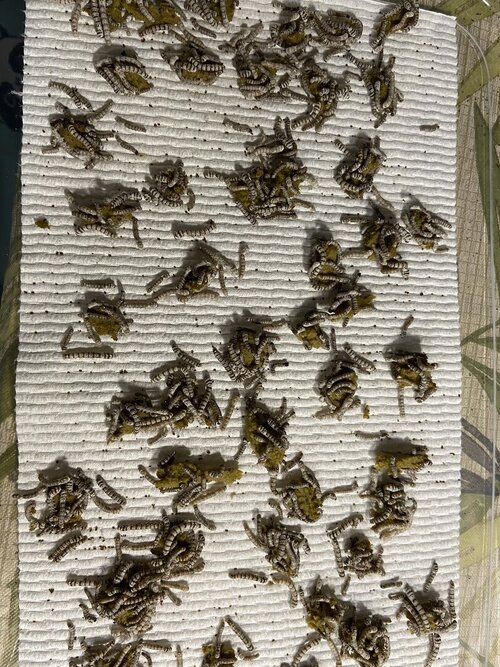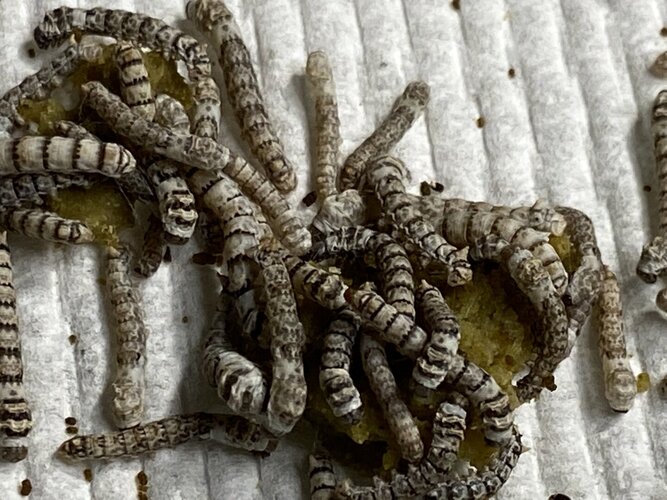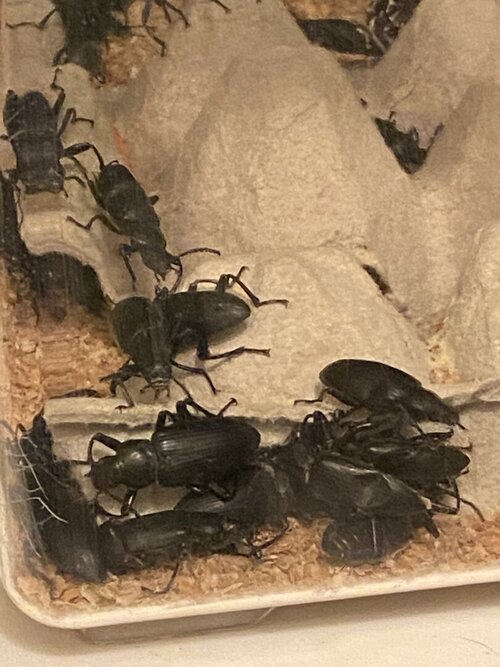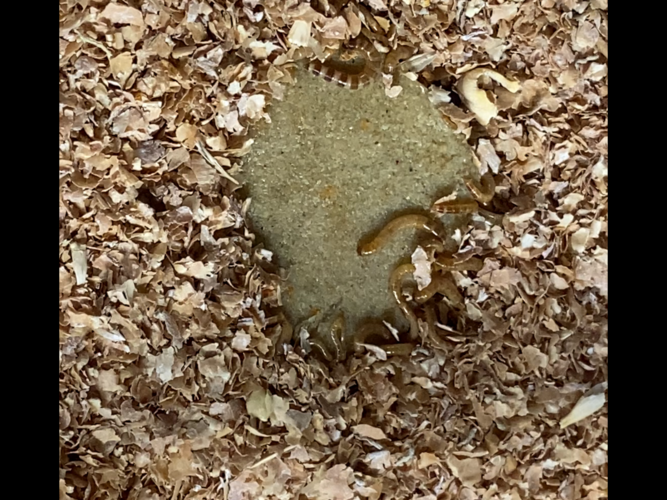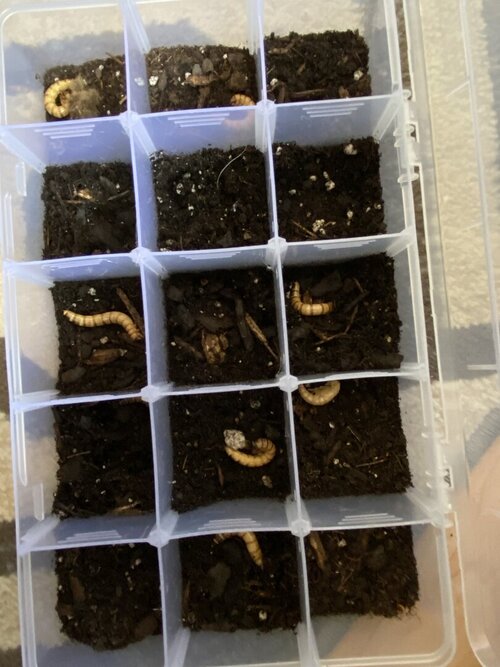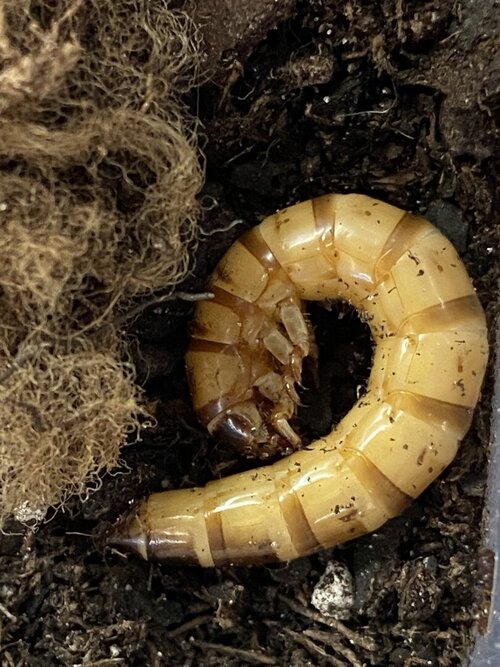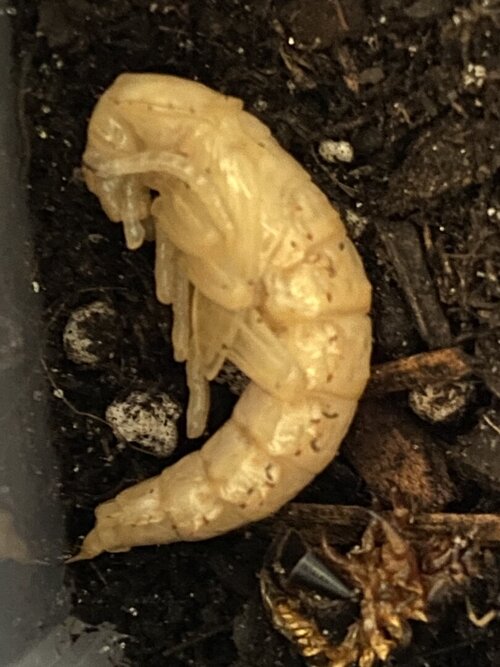MissSkittles
Chameleon Enthusiast
When I was nursing my Sweet Grumpy back to health, I ordered a bunch of hornworms. Unfortunately many were already too big to be fed off by the time they arrived. No problem! I’ll see if I can breed some hornworms. It’ll be an interesting new adventure, right? Ha ha ha ha! Well, to make a long story short, I am about to be completely swamped in hornworms. I’ve collected hundreds of eggs and as of this morning not even half have hatched. In the event that anyone wants to give this a try (and has a small army of reptiles), I thought I’d share my error in judgement experience.
I didn’t think to take pics of the massive bloated hornworms, but I think we all know what they look like. They had stopped eating so I assumed they were ready to cocoon…they were. I placed them in a plastic shoe tote containing some moistened coco coir/soil and they all tunneled down.
About 1 1/2 - 2 weeks later, I checked and they were all brown cocoons. I removed them and placed them on a paper towel in a small screen enclosure with branches and then waited. I did lightly mist every day or two as they do need some humidity to emerge properly.

I didn’t keep track of the time frame, but it was about 3 weeks or so when they hatched into moths. I mixed up some nectar (recipe below), added some fiberglass screen and pool noodles and waited again. I did put a nano heat emitter bulb on top for them.


It took about a day for them to dry their wings and then they got down to business. Similar to silkworms, they do make a bit of a mess spraying their secretions around. I’ve no idea how to determine their gender. After day 2 I found their pale green eggs scattered everywhere. They need to be collected promptly or they stick too firmly to be removed. Some that were laid on the branches just wouldn’t come off and I learned that although the eggs are pretty sturdy, if they are well adhered, you’ll destroy the egg trying to unstick it. The moths are nocturnal, so you can collect the eggs during the day when they are asleep. Every day you’ll be collecting dozens of eggs. After your first egg collection, you’ll need to get your chow ready. I had a bit of a problem with the water/chow ratio (instructions called for too much water), but as I had only mixed up half the package, I was able to correct it. I had some of the traditional tall deli cups with gutter guard that I put the chow into. I added a little mesh as the gutter guard didn’t reach the top. Initially I put the eggs on the lid (the worms natural instinct is to climb), but after collecting so very many eggs, have just started tossing them in the container of chow. I placed the deli cups upside down on top of my beardies enclosure next to his lights for some gentle heat. Within about 3 days, I found babies. They are super tiny and almost translucent. The easiest way to find them is to look for their horn. It looks like a petite eyelash. They are impossible to move without risk of killing them at this point.


This is as far as I’ve gotten so far, but the rest is basically going to be just them eating and growing…and overwhelming me with their quantity. It’s been about 5-6 days since the moths hatched and 2 just died last night.
To make nectar for them is very simple and inexpensive. It’s 4 parts water to one part sugar, boiled together until all sugar is dissolved. I’m storing in the fridge. Some use a hummingbird feeder. I didn’t feel like going out to get one so just hot glued a Tupperware lid with a shallow indent on top of a tall deli cup. To give them something for their feet to grip, I wrapped a small bit of cohesive bandage around the rim. One of their favorite places to deposit eggs is underneath the overhanging lid.
A couple of handy tips…line the entirety of the interior of your screen enclosure with fiberglass screen. It is very difficult to remove the eggs from regular screen without destroying them. Line the floor with wax or parchment paper. It makes for the easiest removal of eggs. Paper Towel makes for the worst removal of eggs. If using branches, either wrap them in plastic wrap or make sure they are very smooth, like a bamboo. Pool noodles are awesome! Eggs come right off. No real need to add any plants. I’ve had fake ones and they don’t seem to like them much. Unlike silkworm eggs, these can not be refrigerated to hatch out when you choose. Expect to obtain dozens if not hundreds of eggs, so have plenty of chow mix on hand and a plan for what to do with all of the worms.
Happy adventuring!
I didn’t think to take pics of the massive bloated hornworms, but I think we all know what they look like. They had stopped eating so I assumed they were ready to cocoon…they were. I placed them in a plastic shoe tote containing some moistened coco coir/soil and they all tunneled down.
About 1 1/2 - 2 weeks later, I checked and they were all brown cocoons. I removed them and placed them on a paper towel in a small screen enclosure with branches and then waited. I did lightly mist every day or two as they do need some humidity to emerge properly.
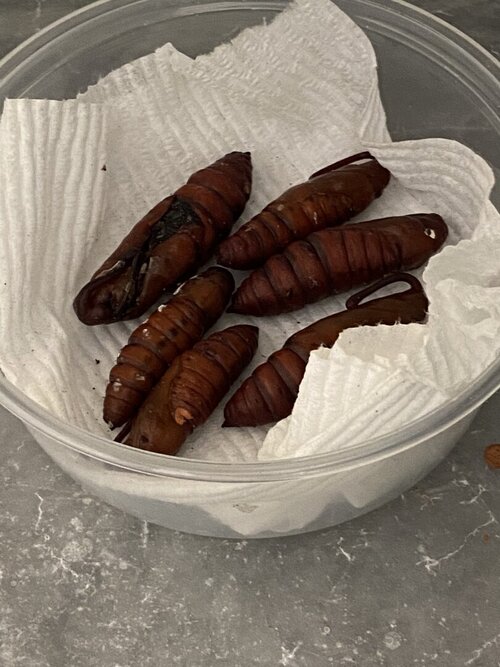
I didn’t keep track of the time frame, but it was about 3 weeks or so when they hatched into moths. I mixed up some nectar (recipe below), added some fiberglass screen and pool noodles and waited again. I did put a nano heat emitter bulb on top for them.
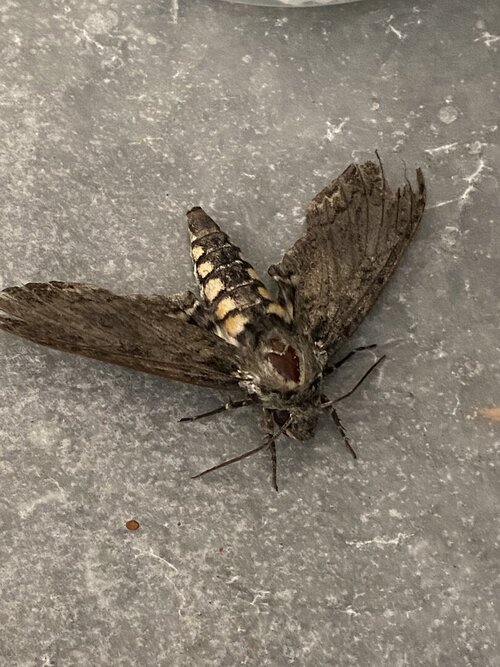
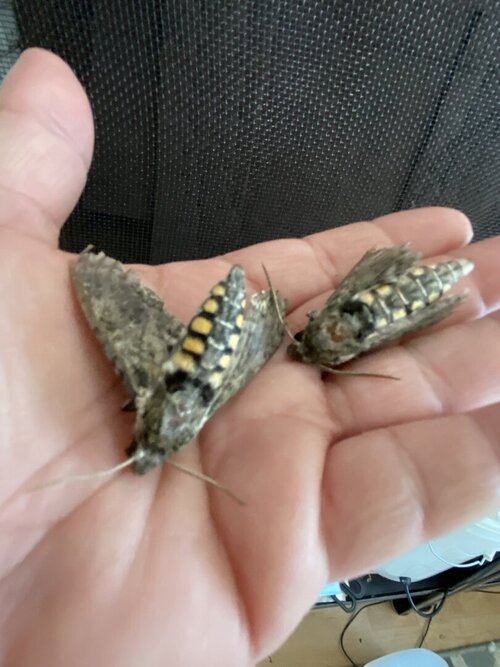
It took about a day for them to dry their wings and then they got down to business. Similar to silkworms, they do make a bit of a mess spraying their secretions around. I’ve no idea how to determine their gender. After day 2 I found their pale green eggs scattered everywhere. They need to be collected promptly or they stick too firmly to be removed. Some that were laid on the branches just wouldn’t come off and I learned that although the eggs are pretty sturdy, if they are well adhered, you’ll destroy the egg trying to unstick it. The moths are nocturnal, so you can collect the eggs during the day when they are asleep. Every day you’ll be collecting dozens of eggs. After your first egg collection, you’ll need to get your chow ready. I had a bit of a problem with the water/chow ratio (instructions called for too much water), but as I had only mixed up half the package, I was able to correct it. I had some of the traditional tall deli cups with gutter guard that I put the chow into. I added a little mesh as the gutter guard didn’t reach the top. Initially I put the eggs on the lid (the worms natural instinct is to climb), but after collecting so very many eggs, have just started tossing them in the container of chow. I placed the deli cups upside down on top of my beardies enclosure next to his lights for some gentle heat. Within about 3 days, I found babies. They are super tiny and almost translucent. The easiest way to find them is to look for their horn. It looks like a petite eyelash. They are impossible to move without risk of killing them at this point.
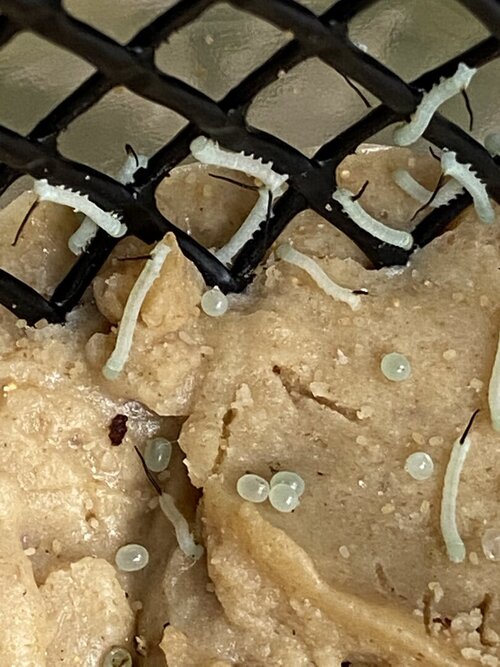
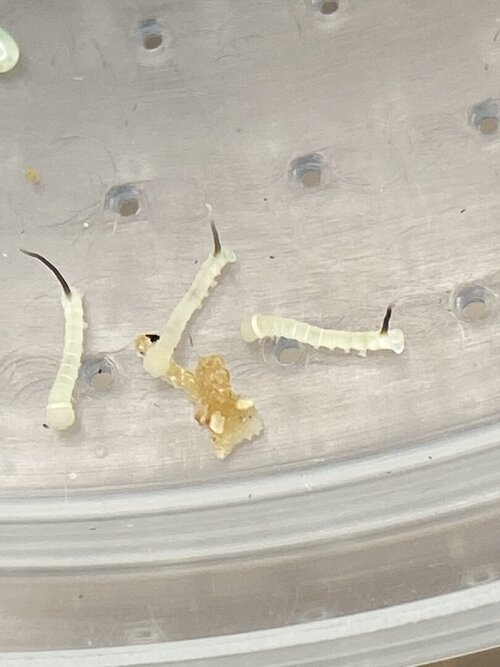
This is as far as I’ve gotten so far, but the rest is basically going to be just them eating and growing…and overwhelming me with their quantity. It’s been about 5-6 days since the moths hatched and 2 just died last night.
To make nectar for them is very simple and inexpensive. It’s 4 parts water to one part sugar, boiled together until all sugar is dissolved. I’m storing in the fridge. Some use a hummingbird feeder. I didn’t feel like going out to get one so just hot glued a Tupperware lid with a shallow indent on top of a tall deli cup. To give them something for their feet to grip, I wrapped a small bit of cohesive bandage around the rim. One of their favorite places to deposit eggs is underneath the overhanging lid.
A couple of handy tips…line the entirety of the interior of your screen enclosure with fiberglass screen. It is very difficult to remove the eggs from regular screen without destroying them. Line the floor with wax or parchment paper. It makes for the easiest removal of eggs. Paper Towel makes for the worst removal of eggs. If using branches, either wrap them in plastic wrap or make sure they are very smooth, like a bamboo. Pool noodles are awesome! Eggs come right off. No real need to add any plants. I’ve had fake ones and they don’t seem to like them much. Unlike silkworm eggs, these can not be refrigerated to hatch out when you choose. Expect to obtain dozens if not hundreds of eggs, so have plenty of chow mix on hand and a plan for what to do with all of the worms.
Happy adventuring!








